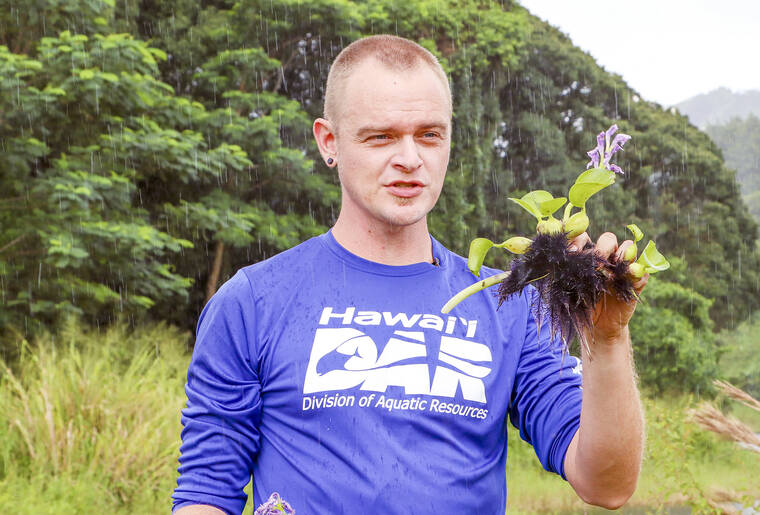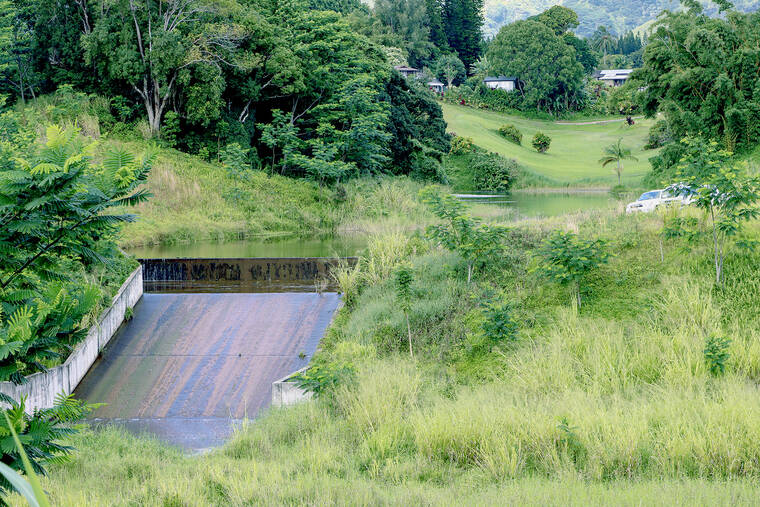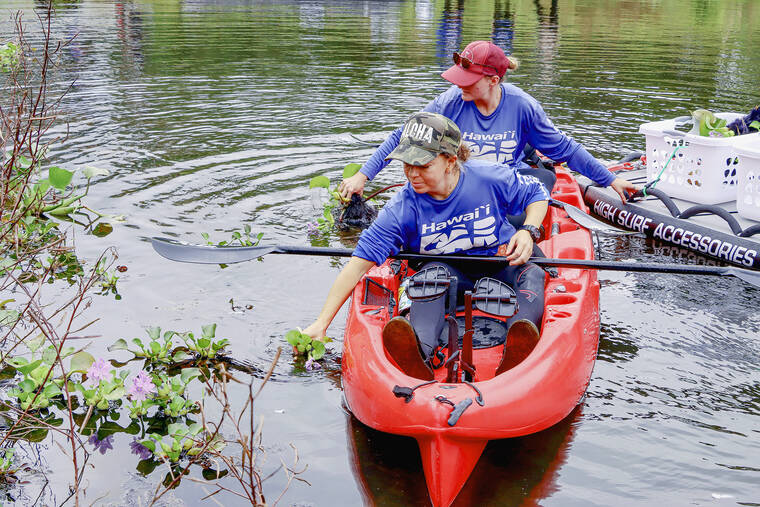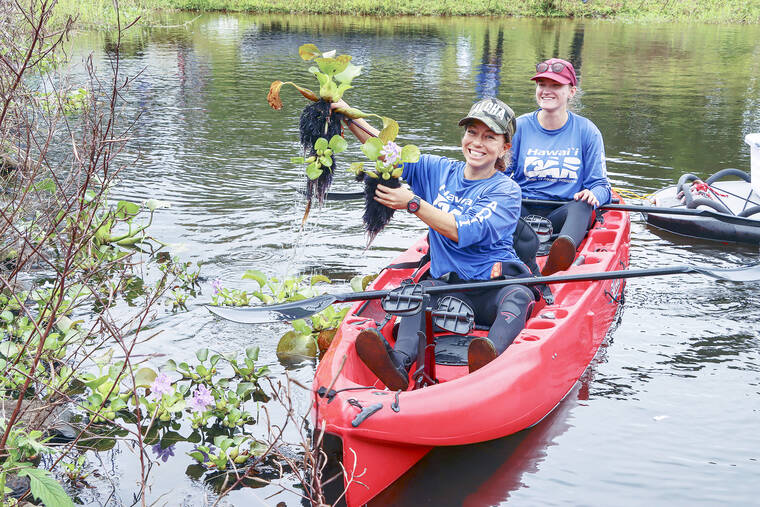KAPAHI — State specialists are removing a beautiful but ecologically-harmful flower from the Upper Kapahi Reservoir before it spreads across the East Side.
The plant is water hyacinth (Pontederia crassipes), a popular ornamental often found in koi ponds, that has choked native waterways throughout the United States. It last threatened Kaua‘i ecosystems after Hurricane ‘Iniki in 1992.
“It hasn’t been a problem since then. That’s why we wanted to put a stop to this,” said Aaron Swink, an education specialist for the Hawai‘i Department of Land and Natural Resources Divison of Aquatic Resources, from the reservoir on Monday morning.
Swink and six other DAR personnel, including two aquatic invasive species technicians from O‘ahu, were on their first day of hyacinth removal after a concerned resident reported the invasive plant population earlier this autumn.
Large-scale removal of established water hyacinth populations can cost states millions of dollars. But Swink believes the team’s two-day cleanup operation, scheduled for yesterday and today, will nip the growing problem in the bud.
“The amount of work that it takes to clean a river or a waterway once it’s clogged up with that, it’s just astronomical,” Swink said. “…Florida’s really bad. South Texas is really bad with this stuff. Once it gets in somewhere, it’s very difficult to control.”
Swink tore two fistfuls of hyacinth from the reservoir’s edge and carried them up a steep embankment. A brief examination revealed a dark, almost feather-like root system topped by thick green leaves and a lavender-colored flower.
Many of the plant’s stems appeared swollen. These bulbous shapes were gas-filled chambers that kept the free-floating hyacinth above the reservoir’s surface, Swink explained.
“It can spread by seed, but mostly how it spreads is during a big rainstorm, it’ll overflow out of someone’s koi pond or decorative pond and then into the waterways,” he said, snapping off a small piece of gas-filled stem and holding it up to the sunlight. “This will sprout into a plant, and it just goes nuts from there.”
A flood or rainstorm almost certainly swept similar fragments into the Upper Kapahi Reservoir from a nearby residential property.
Water hyacinth is legal to purchase despite its invasive qualities. DAR personnel recommend landscapers and property owners choose lotuses or lily-pads as alternatives.
“Things that anchor to the soil, that go down and have a root so they don’t float away if we have a big rain, like we often have here,” Swink said.
By day’s end Monday, the DAR team had removed just over half of the Upper Kapahi Reservoir’s total water hyacinth population: a 6-foot-high, 40-foot-long pile of plant debris weighing up to two tons, which will be killed when covered in tarpaulin and allowed to compost.
The team will return to the site on today, to finish the job with help from Kaua‘i Invasive Species Committee personnel. Swink anticipates three to four tons of hyacinth will be pulled from the reservoir, when the work is complete.
•••
Scott Yunker, reporter, can be reached at 245-0437 or syunker@thegardenisland.com.





